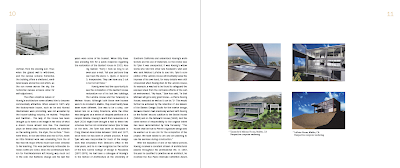Tuesday, November 23, 2010
Reading response
Reading response
In Response to the Readings
Monday, November 22, 2010
Tuesday, November 16, 2010
Sunday, November 14, 2010
process: IDEAS
final artifact: (for some reason, the sounds didn't upload to YOUTUBE)...
My understanding of the theory of story structure was richer because I was able to use more channels than one. by using different channels simultaneously, I message can be conveyed a great deal more effectively than simply using one channel. However, I realized pretty quickly that in adding more channels than necessary, a message's meaning can easily be distracting or altered unnecessarily.
I thought that by simply using only two channels (image and sound effects) that my message was quite clear, and quite effective. It seems quite capable of holding the audience's attention for the whole of its duration. and I think it is quite memorable, and the message is clear: that is, YOT makes toys which are creative, innovative, and inspire imagination.
I found it to be quite a challenge to compose these visual elements in a fairly beleivable way, which would still seem playful and yet somewhat realistic. another challenge was to add sound that was approriote. so there was a considerable amount of compilation of sounds (I used audacity for that). I had to time them, layer them, and cut them, then reimport the audio files into flash. it was a bit of a process, but one that I am comfortable doing by now.
I had many versions of how the toy blocks move. I tried making them swing like on a crane and that was tough. I also tried to create a 3D cube for those toy cubes so that I could have the block spin as it moved. that didn't work very well. Id probably want to use After Effects for that. duh. I found it helpful to look up real videos of these actual mechanism from the real world. I used that to inform the way I put my objects into motion. At least you can understand what each object is doing. that's nice.
I'm glad the transitions are fairly seemless too. I'm proud of the carrots swinging in toward the end.
process: IDEAS
Sunday, November 7, 2010
more koenig process






















































